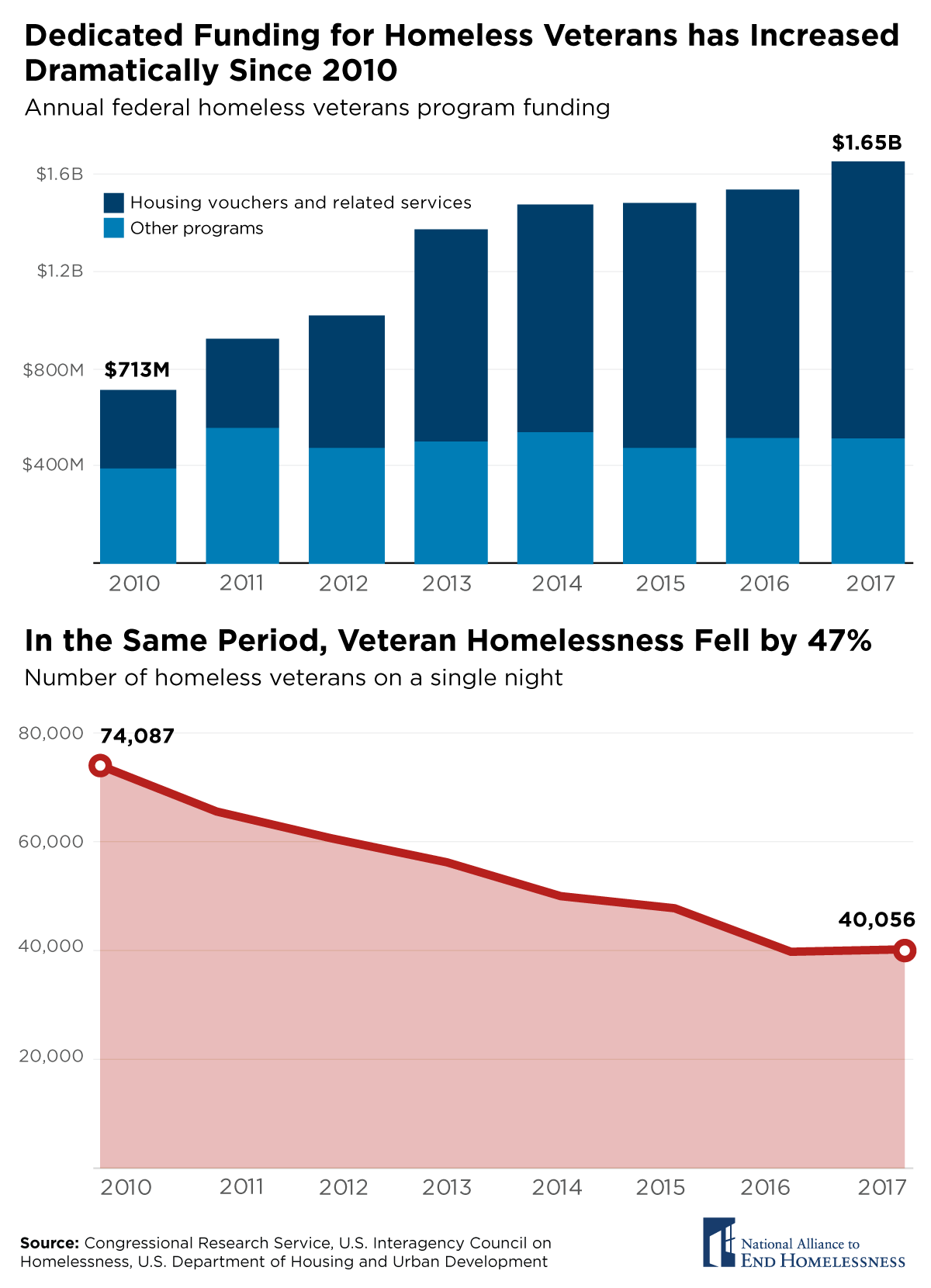Since 2010, the United States has cut veteran homelessness almost in half, providing a model for ending homelessness for all groups nationwide. Three components were critical to this decline:
Increased investment. The federal government more than doubled federal funding for homeless veteran programs — from $713 million in 2010 to $1.65 billion in 2017. Much of expanded funding was for housing placements and related services.
Coordination and commitment. In the 66 communities that effectively ended veteran homelessness, Continuums of Care and federal, state, and local agencies coordinated services and programs. Local leadership from VA Medical Centers also played a significant role.
Focusing on the most vulnerable. Large funding increases for case management, accompanying housing vouchers, and other supportive services (from $150 million in 2010 to $874 million in 2017) ended homelessness for high-need veterans.
Maintaining a federal commitment to these efforts will help us to continue our progress toward ending veteran homelessness and provide a blueprint for ending homelessness nationwide.

Note: Housing vouchers and related services includes VA Grant and Per Diem Program, HUD-VA Supportive Housing, and Supportive Services for Veteran Families. Other programs includes VA Health Care for Homeless Veterans; Justice Outreach, Homelessness Prevention: Healthcare for Reentry Veterans and Veteran’s Justice Outreach; Domiciliary Care for Homeless Veterans; Compensated Work Therapy/Transitional Residence; and The Homeless Veterans Reintegration Program.
Source: Congressional Research Service, U.S. Interagency Council on Homelessness, 2017 Annual Homeless Assessment Report (AHAR) to Congress, Part 1
